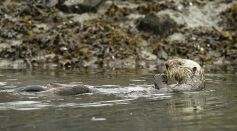ENVIRONMENT & CLIMATE

Oil Drilling Will Continue in the Arctic National Wildlife Refuge

Ancient Gene Family Allows Algae to Synthesize Antifreeze

Reintroducing Sea Otters in British Columbia Upset the Balance in Ecosystem

6 Bottleneck Whales Dead in Largest Live Stranding in the History of Ireland

Israel Reports West Nile Virus-Infected Mosquitos
[WATCH] Massive Sinkhole in China Swallows 21 Cars

The Black Death: Bubonic Plague Pandemics Throughout History
Equinox: The Light and Darkness Phenomenon That Happens Twice a Year

Alaska Salmon Grew Smaller Over the Past 60 Years
6 Things You Probably Didn't Know About Death Valley

New Study Disproves Previous Hypothesis on the Role of Zebra Stripes

Where Did Penguins Originate? Hint: It's Not Antarctica

NASA Goddard Scientists Map Out Global Losses of Mangrove Habitats

It's Snowing Chocolate in a Swiss Town After Factory Malfunction
Most Popular

3I/ATLAS: The Truth Behind the Mysterious Interstellar Object Now Targeted by NASA and UN Teams

Hellfire Missile Video Reveals MQ-9 Reapers Being Used for Aerial Combat

Nvidia's Jetson Thor Could Make Humanoids Smarter Than Ever

Cyber Attack on Jaguar and Land Rover Cripples UK Operations: 1 October Earliest Restart as Deliveries Disrupted Worldwide





